Seeing NASA's OSIRIS-REx asteroid sample up close at the Smithsonian was surreal
"That was as much as 200 million miles away at one point. Yeah, now it's only like 20 miles from my house."
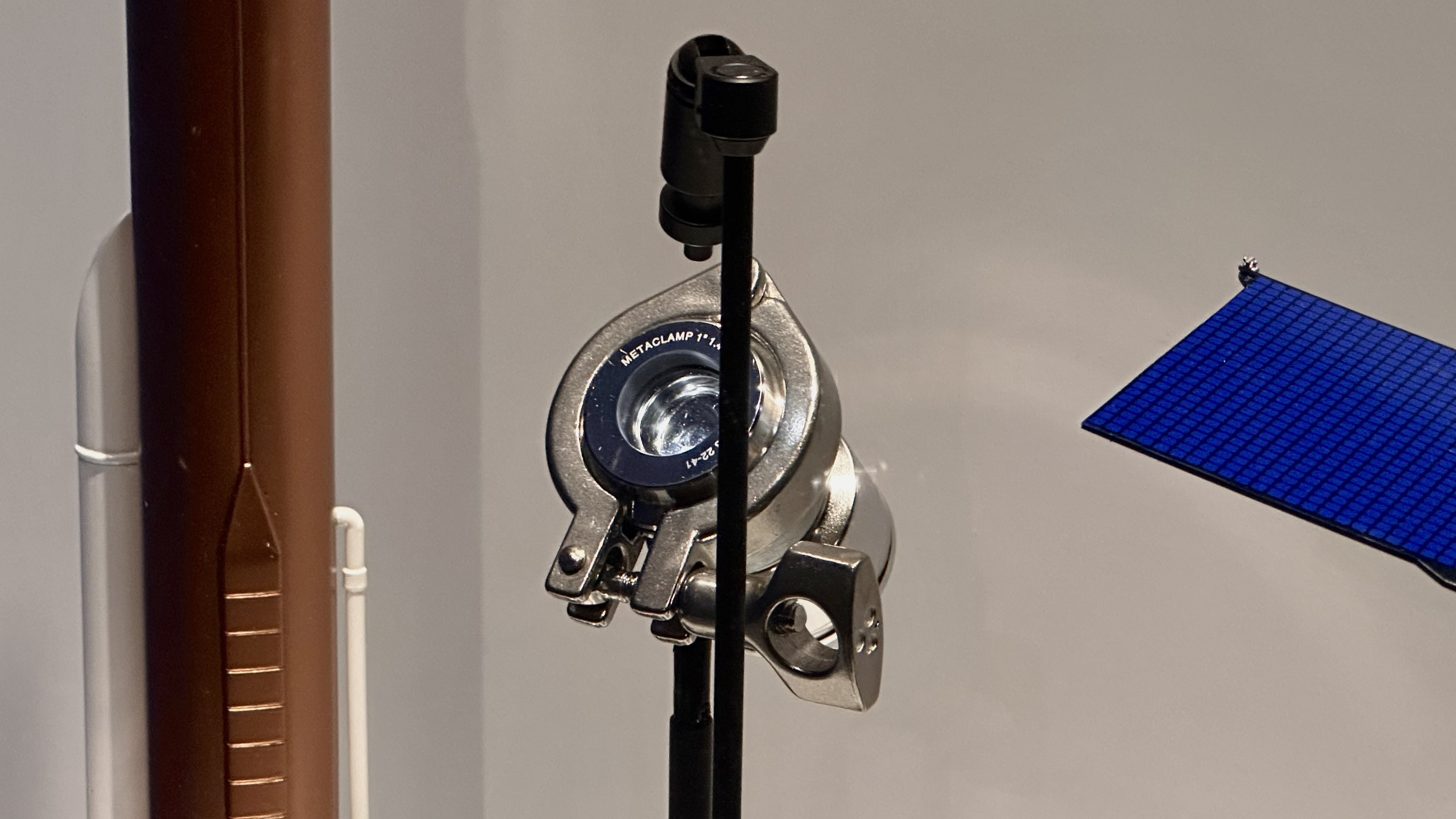
WASHINGTON, D.C. — It was business as usual at the Smithsonian's National Museum of Natural History on Nov. 3, with visitors shuffling through dinosaur exhibits, tiny school children in matching red hats juxtaposed by towering animal models, and focused parents trying to catch a glimpse of the glimmering Hope Diamond. Business as usual indeed, except in one special corner: The Hall of Geology, Gems and Minerals.
This is where a dense crowd of scientists, engineers and journalists had gathered, eagerly awaiting the first public unveiling of NASA's OSIRIS-REx asteroid sample. The energy in the hall was palpable. Even though this specimen, collected from a space rock named Bennu, represents only a teeny portion of the total sample the agency managed to pick up — it's only about a quarter inch long — its mere presence on our planet is astounding.
Bennu sits several million miles away from Earth — to bring pieces of it here, scientists had to devise a mission that'd send a spacecraft on a multi-billion-mile (and quite complex) journey through the solar system, have the craft actually hover over Bennu, deploy a sample collection arm to gather bits off the surface, keep those bits safe inside the spacecraft, and bring the spacecraft back to the vicinity of our planet. Then, the spacecraft would have to swiftly drop off the sample collection capsule at exactly the right moment, and the capsule itself would have to withstand an incredible amount of stress and blazing heat while plunging through our atmosphere until it reached the ground. OSIRIS-REx was built to do all that — and it worked.
Which leads us to what we can now see behind glass in one of the Smithsonian's halls: A piece of a spaceborne asteroid in an airtight container, sandwiched between scale models of the Atlas V rocket and mighty spacecraft that brought it here.
"The Bennu sample will take its place beside meteorites that come from the dawn of the solar system, the metallic cores of ancient asteroids, and even those knocked off Mars that fell to Earth, as well as moon rocks returned by the Apollo astronauts," Tim McCoy, the museum's curator of meteorites and member of the OSIRIS-REx mission, told Space.com prior to the unveiling. "We placed it at the front of the Moon, Meteorites and Solar System gallery because it represents the very beginning of our solar system's story."
"This is something I've dreamed about for 20 years," he said the day of, "and today it comes to reality."
Related: Smithsonian debuts 1st display of asteroid Bennu sample brought back by OSIRIS-REx
Get the Space.com Newsletter
Breaking space news, the latest updates on rocket launches, skywatching events and more!
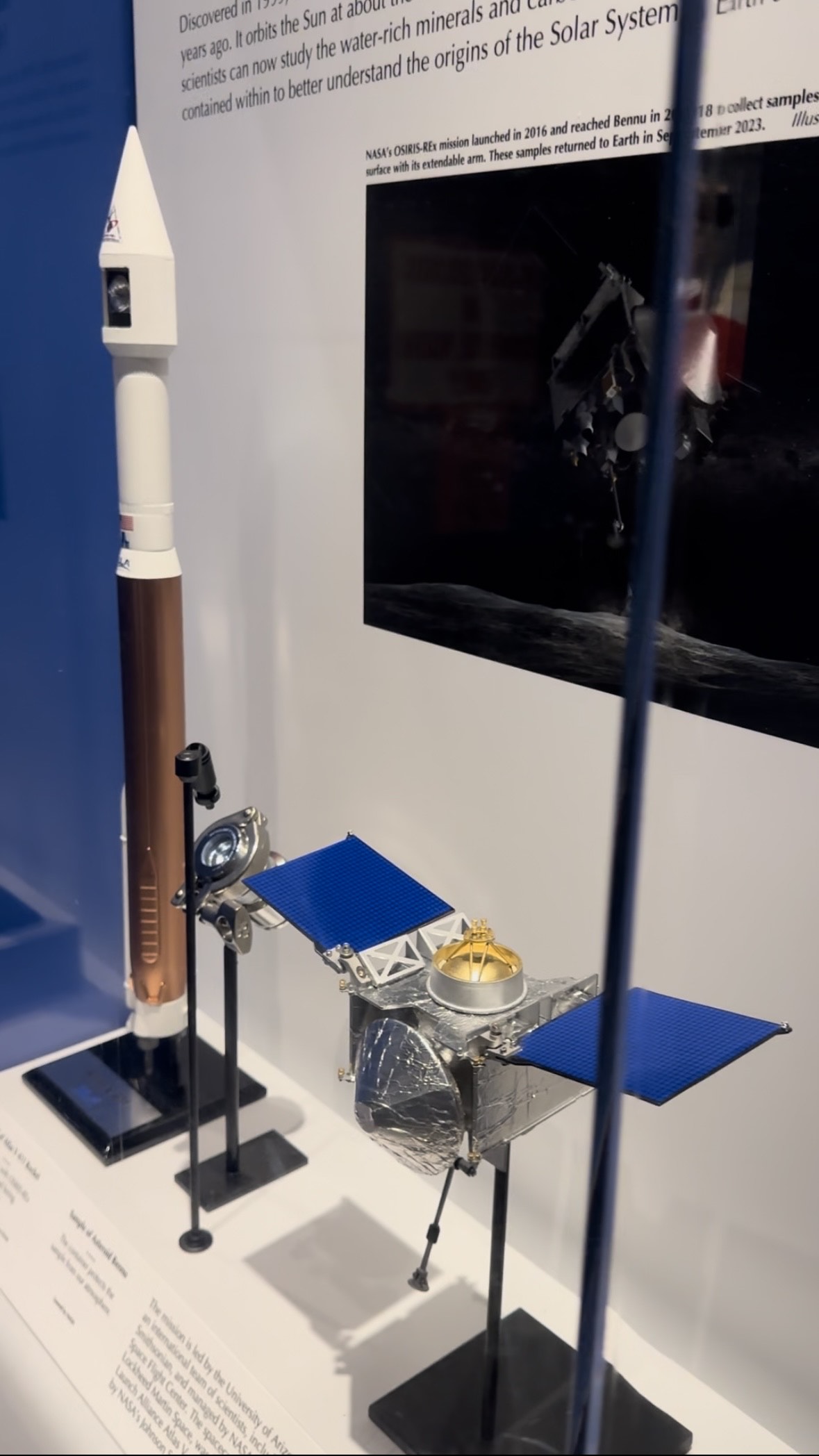
The profound meaning of Bennu was a recurring topic during the morning reveal; the fact that this asteroid is believed to be cut from the same fabric that formed our solar system long, long ago. And as NASA Administrator Bill Nelson said during the event, not only do space rocks like this one fly through our solar system, but they might also "fly through other solar systems far out there in the universe." Perhaps, he pondered, asteroids similar to Bennu have flown through a few cosmic neighborhoods just like ours, too.
"In the four and a half, five billion years of evolution of this solar system, the 13.8 billion years of the evolution of the universe and its billions of galaxies, each having billions of stars, these things run into one another, and some gas clouds form and spit out stars. Then, all of this is colliding with each other," Nelson said. "Ultimately, we have a remnant of that."
"It's all part of our quest to try to understand who we are; where we are in the vastness of this Earth," he said.
With this in mind, there was a certain surrealness looming in the room when the official unveiling happened, signified by a thick white cloth being dramatically slipped off the exhibit. And this feeling wasn't just among attendees unaffiliated with the mission like me; some members of the audience were, in fact, OSIRIS-REx scientists who worked on the endeavor for major chunks of their careers, yet hadn't physically seen their asteroid muse before. NASA has been trying to keep the mission's samples as immaculate as possible since their arrival on Sept. 24, meaning only those who absolutely have to go into the room with the Bennu pieces get to enter.
"Actually, this is why a lot of us are here," Brent Bos, an instrument scientist on the OSIRIS-REx mission and senior research physicist at Goddard Space Flight Center, told Space.com. "We have not seen them in person. It's very restricted as to who is in there; we wanted to keep contamination down."
Upon realizing this, I found the origin of the room's exhilarating energy. I felt thrilled to see the samples for the first time, having covered the OSIRIS-REx mission for just a couple of years. Bos had literally worked on the spacecraft's operations for 13 years, and this was also his first time witnessing the treasure.
"That was as much as 200 million miles away at one point," he reflected. "Yeah, now it's only like 20 miles from my house."
Mike Moreau, deputy project manager for OSIRIS-REx, had worked on the mission for 10 years.
"Being up close like that, within six inches of the case, that's the closest any of us have been to the sample," he said. "Understanding how much it took to get this sample and all the things that could have gone wrong that were overcome to make this successful — it makes it so much more meaningful."
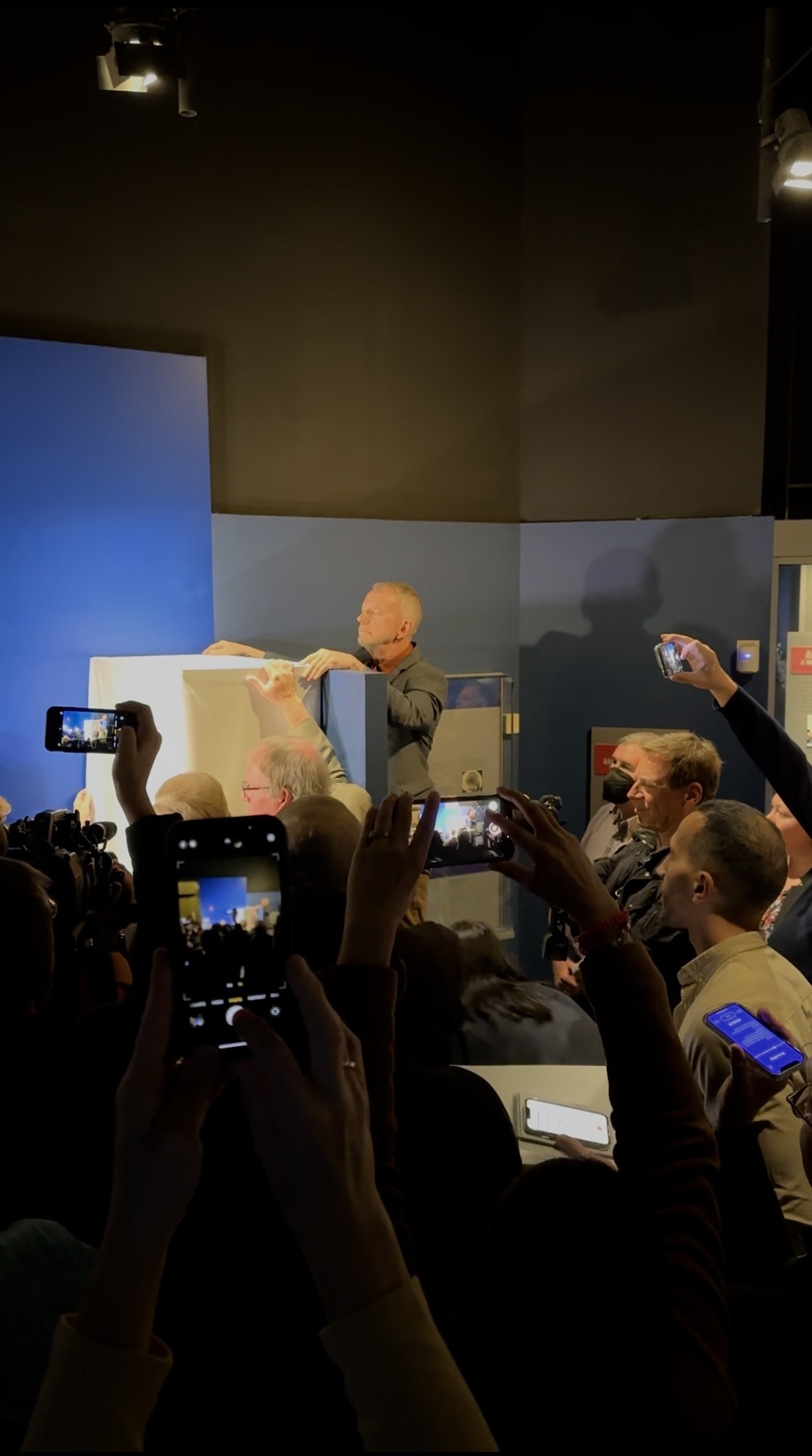
McCoy, after the unveiling, joked about how transporting the samples to the museum was a strangely anticlimactic experience. One of the research specimens arrived on Monday (Oct. 30) night at about 10 p.m. ET. He'd simply picked up the container with the specimen, drove it over to the museum, parked his car, walked through security, and brought it up to the hall. "I opened it up," he said, "and I was beyond thrilled to see that it was still in one piece."
The other sample didn't even get that private car, red carpet treatment (there are two because a second specimen was promised to the museum for study purposes.) McCoy had brought that one over himself, taking a flight from Houston to Washington DC. Then, he took the metro to the museum. Both genuine and nervous laughter ensued after he remarked, "WMTA can say that they transported a piece of Bennu."
But beyond the glory of public transit, such concern about the sample's journey really seems to illustrate how precious it feels to have an off-world substance on our planet. Especially one that could help us write the true backstory of the vessel on which we travel the universe.
"Our planet has features that we haven't found on any other planet in the solar system, or outside the solar system," McCoy said. "We have continents, we have oceans, we have life. And the asteroid sample that we see today is the starting point. It's the building block of all that."
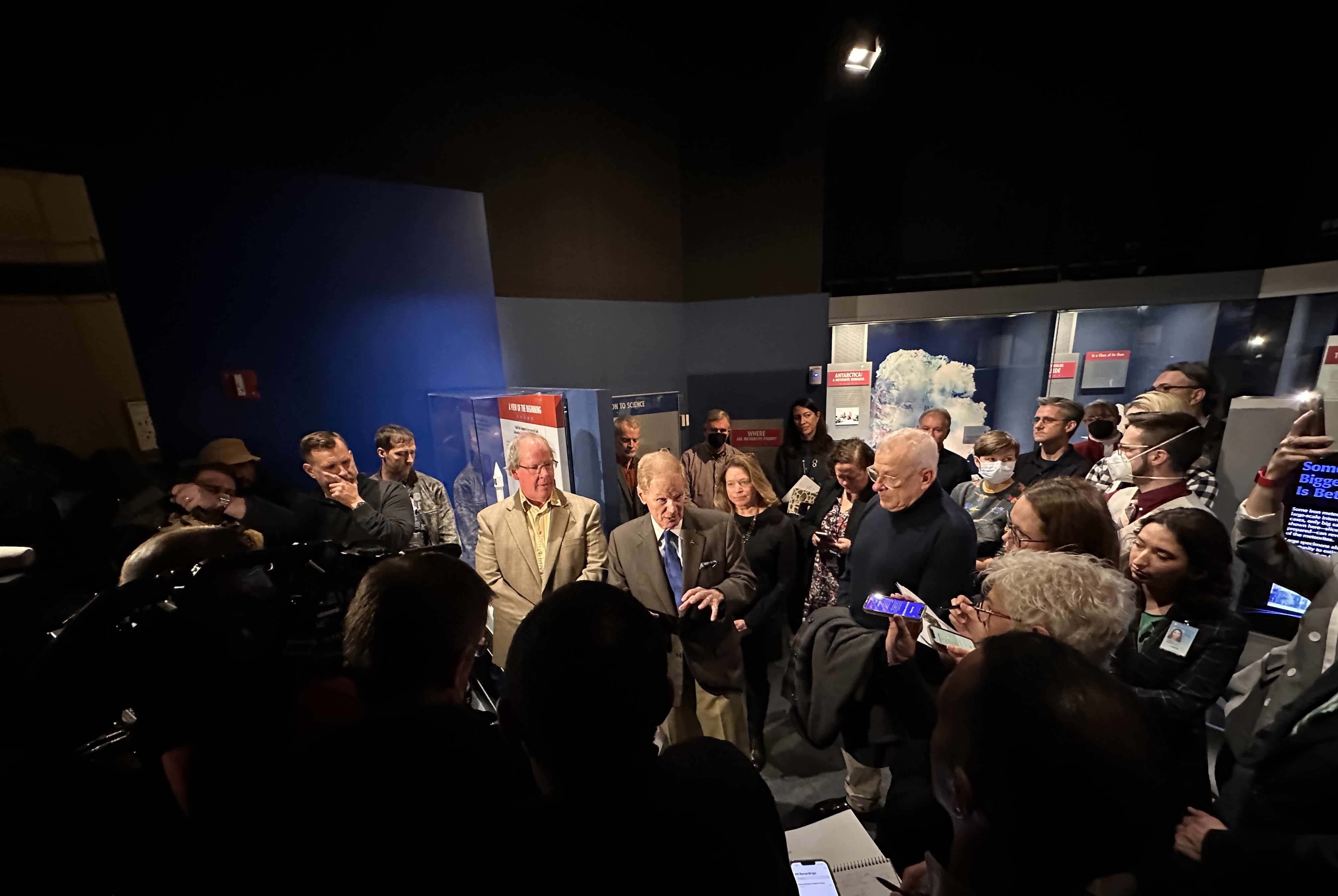
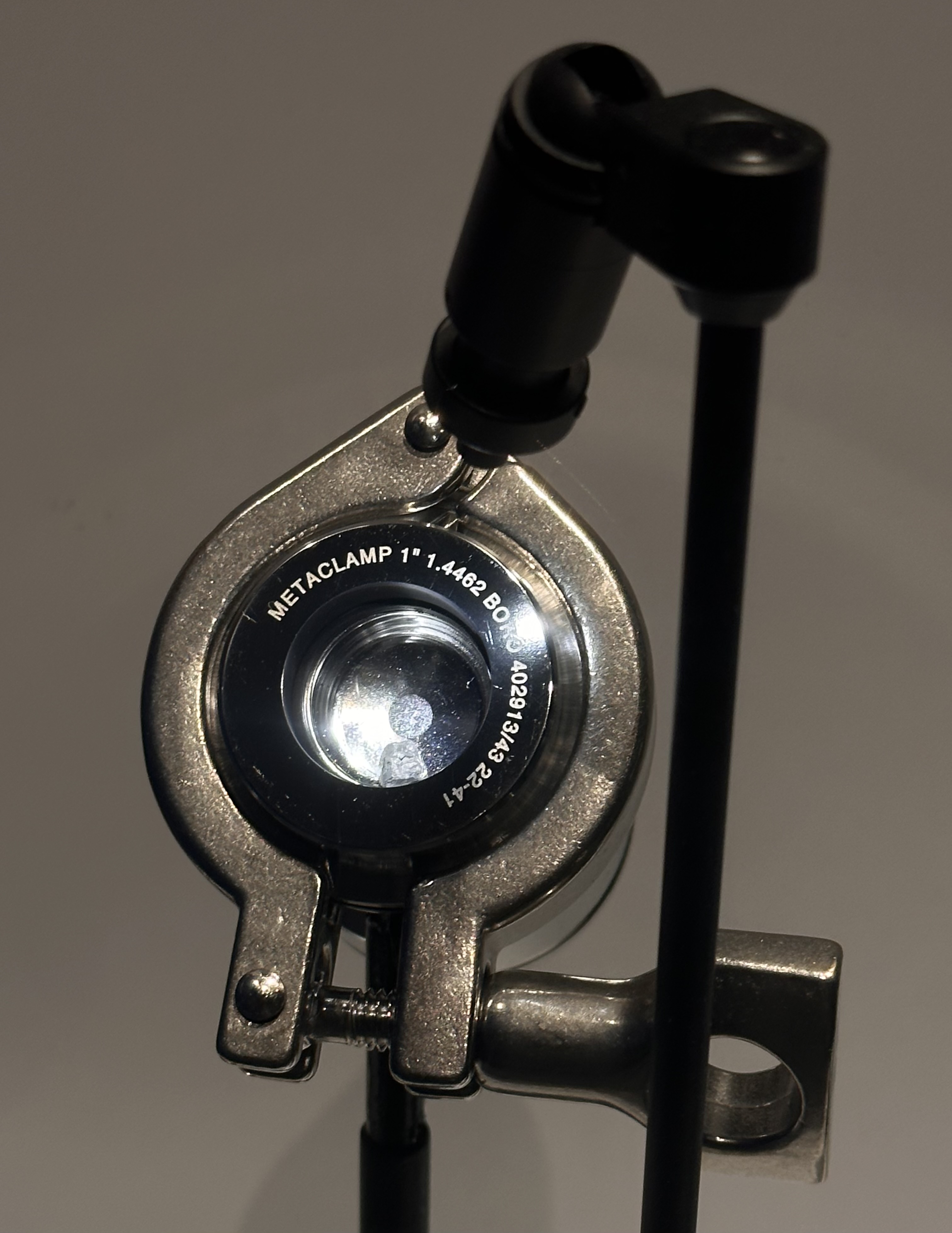
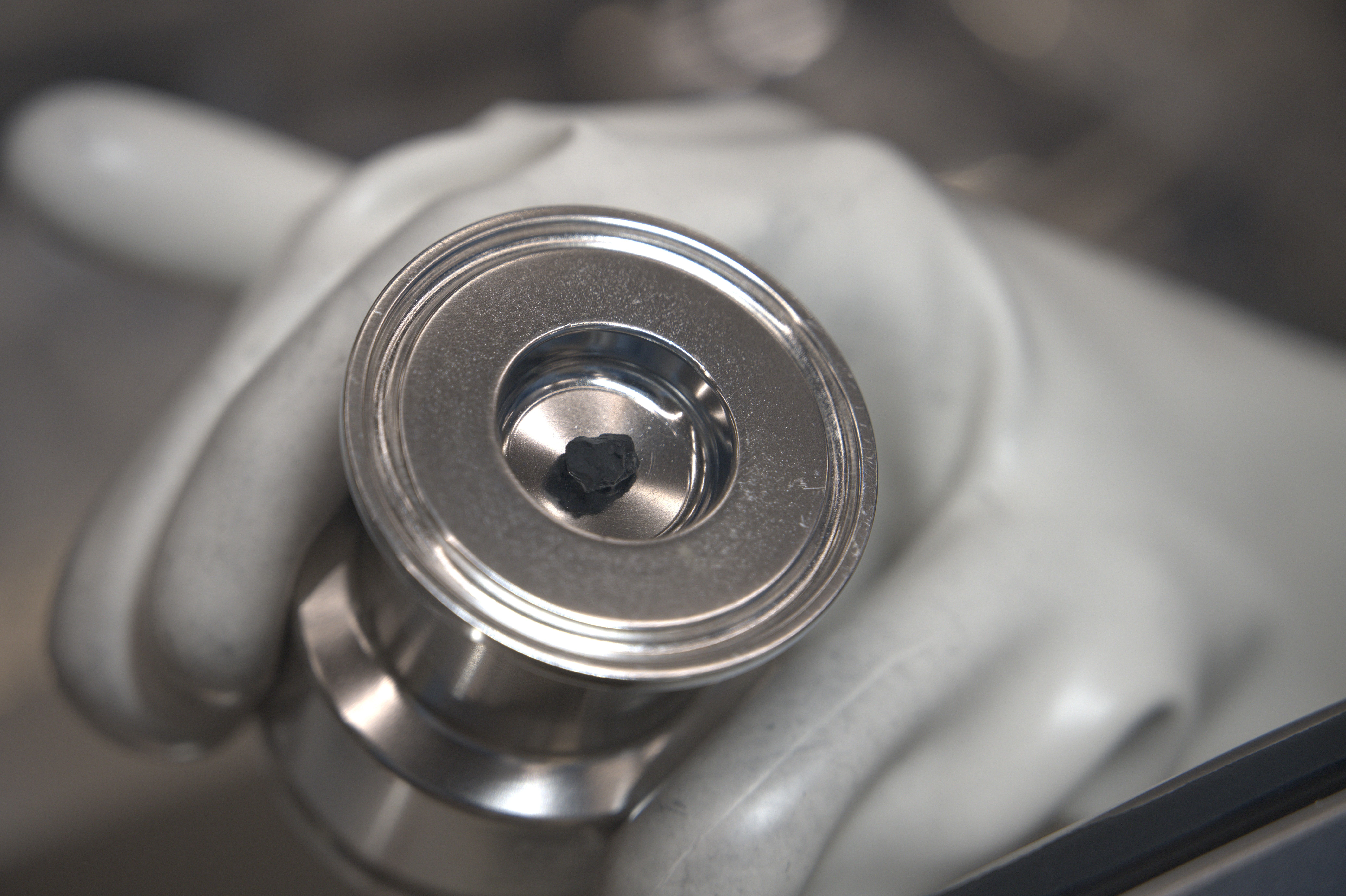
Already, scientists have found the Bennu samples to hold evidence of elements critical to life as we know it: Carbon and water. Moreover, this information has only been gleaned from dust and debris on external areas of the capsule — when the OSIRIS-REx spacecraft reached its arm down to collect samples of Bennu, the asteroid appeared to be much more malleable than expected. That caused quite a commotion, as a plume of dust essentially flew outward and upward upon impact.
"The density was much less than the average density of Bennu that we measured," Moreau said. "It's more dense in the middle and less dense as it goes further out. But yeah, the surface was like a ball pit. No resistance."
What this means, however, is the capsule serendipitously returned home literally covered in stunning Bennu samples. In fact, the investigation team hasn't even opened the capsule yet to get to the bulk sample, but already announced the mission surpassed its sample size goal of 60.3 grams. They managed to scrape about 70 grams off so far.
On that note, the size of this sample is such a big deal because it means lots of it can be stored away for future generations to look at and study too, just like how some of the Apollo moon rocks were locked up after astronauts brought them home to open on a later date. For comparison, the Japanese Aerospace Agency's Hayabusa2 mission only brought back about 5 grams of material from the asteroid Ryugu — and that itself offered scientists some intriguing investigative results.
"Our grandchildren can come up with a question we can't imagine now, with a technique we haven't even thought of inventing," McCoy said. "And this material will be available from NASA, from our colleagues at Johnson Space Center, in a pristine state."
It's also likely why we're able to have some of the Bennu sample on display at the Smithsonian in the first place. NASA specifically allocated this bit to be kept for public viewing, and made sure (at great length) that the specimen selected for the museum was fit for the institution. For instance, the team wanted something that was relatively flat so it looks photogenic in the case and, per McCoy, scientists went through six or seven stones before picking out the right one. It was kind of like Goldilocks picking out which bed to sleep in. Can't be too big, or too small. It has to be just right. There's even a CAT scan of the chosen rock at Johnson Space Center, McCoy said, so you can see the inside of the specimen in exquisite detail.
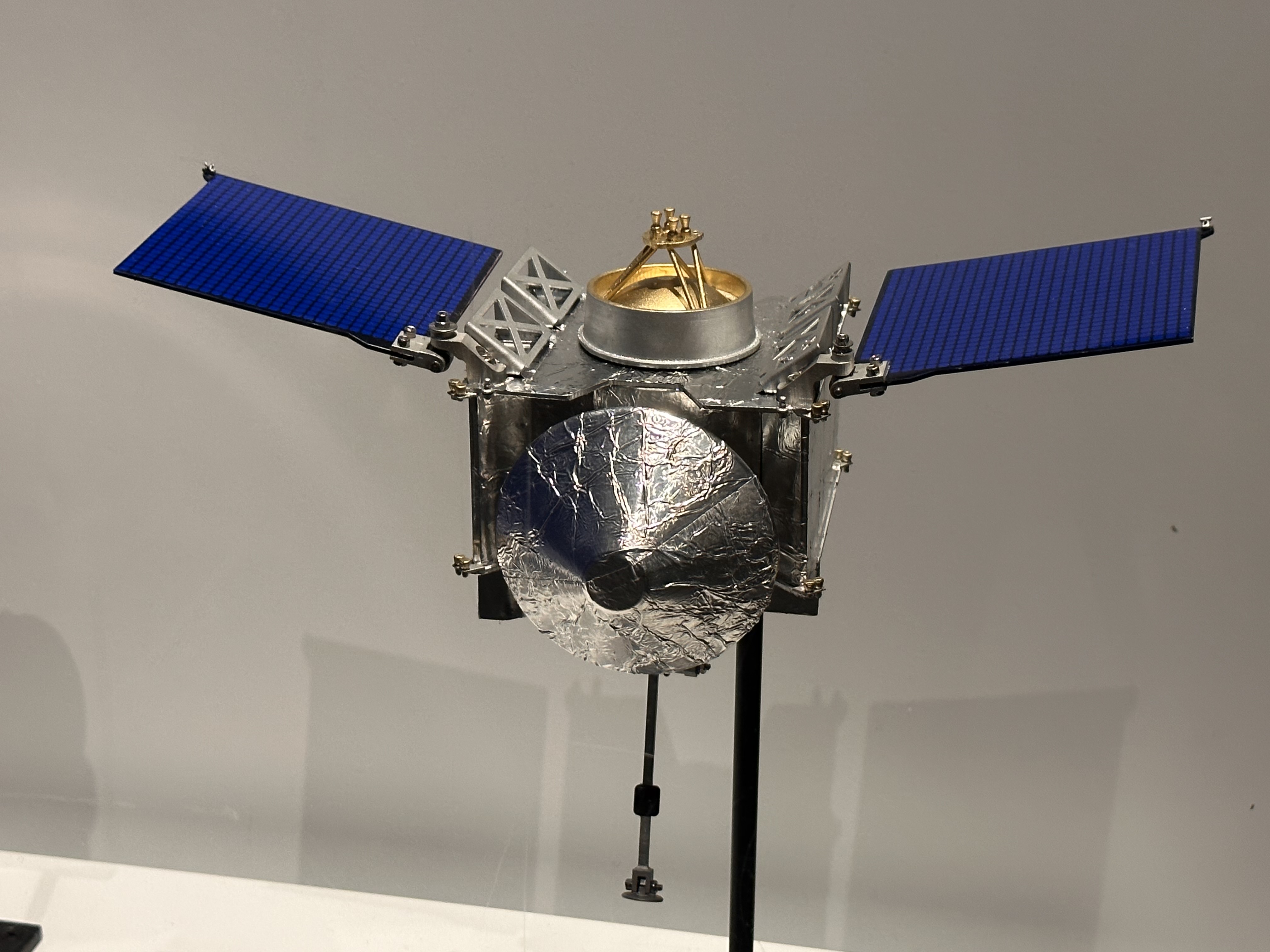
But before you take a sigh of relief, the OSIRIS-REx mission isn't done yet! Well, not exactly. It just goes by a new name now: OSIRIS-APEX.
Remember how the craft merely dropped off the sample capsule after returning to Earth from Bennu? The reason it didn't land back down with its parcel is that it's on its way to bigger things. Upon swinging back around our planet, the spacecraft started another journey to another asteroid: Apophis.
"Apophis will do everything up to the point of collecting the sample," Moreau said. "We don't have another sample head. We'll go all the way down to the surface, we'll try to disturb the surface and see if it reacts in the same way."
As of now, Moreau says OSIRIS-APEX is getting ready to go through a close flyby of the sun, which will bring it to a realm it hasn't been in before. "There's a lot of preparation for that to make sure it can survive high temperatures and stuff like that."
But, for now, perhaps we can bask in the glory of OSIRIS-REx just a little longer. As McCoy told me, "so many obstacles were overcome by a tremendous team of scientists and engineers to reach this moment at which we can begin answering the questions that started us down this path originally."
"On the other side of that wall is the Hope Diamond," Nelson said in the hall, with a chuckle. "I was hoping we were going to find diamonds and rubies."
"I think we found something better than diamonds and rubies," McCoy responded. "We found water and carbon."
Join our Space Forums to keep talking space on the latest missions, night sky and more! And if you have a news tip, correction or comment, let us know at: community@space.com.

Monisha Ravisetti is Space.com's Astronomy Editor. She covers black holes, star explosions, gravitational waves, exoplanet discoveries and other enigmas hidden across the fabric of space and time. Previously, she was a science writer at CNET, and before that, reported for The Academic Times. Prior to becoming a writer, she was an immunology researcher at Weill Cornell Medical Center in New York. She graduated from New York University in 2018 with a B.A. in philosophy, physics and chemistry. She spends too much time playing online chess. Her favorite planet is Earth.









